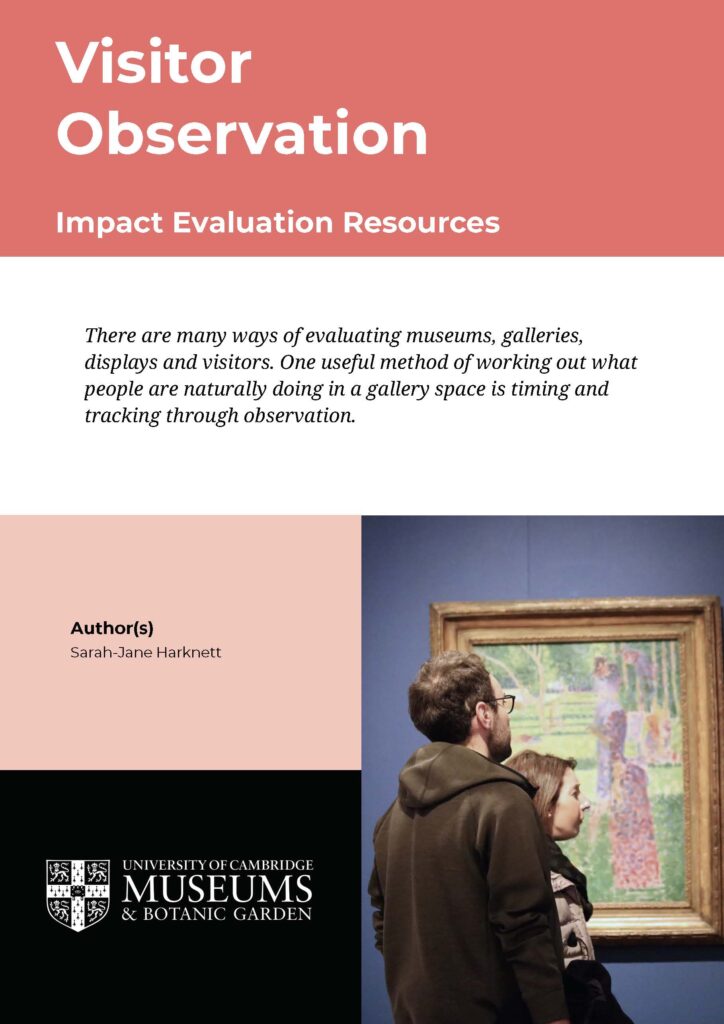How are visitors using your exhibition or gallery? This resource provides guidelines for effective evaluation through observing visitors.
By observing visitors, we can unobtrusively observe where they are stopping, how long they stop for and what they do when they stop. If we combine the results from lots of visitors, we can see which parts of a display are attracting visitors, which objects, cases or text are popular and which parts are ignored. We can also use the data to see what route visitors take through a gallery and the average time spent.
Our Impact Evaluation Resource guides you through the whole process, from planning your evaluation through to what to do with the data. The full resource is available to download at the bottom of this web page.
When we observe visitors in a museum, we try to record a natural visit, by looking at where people go and what they do. This information can help museums to make changes to displays, or when they plan exhibitions in the same space in the future. To carry out an observation study, you will need to create a simple plan, so that you can record what happens in every part of the gallery you are interested in. You might be looking at a whole gallery, a case or interactive, a single text panel or one object. When a visitor crosses into the study area, you should start timing them, recording their movements on a plan. If it is relevant, you could record some basic information about the visit, such as whether the person is on their own or in a group, the conditions in the gallery (is it very hot or crowded?) or anything else that might have influenced what they did. If you want to get a cross-section of visitors, you should try to carry out visitor observations at different times of the day and week, covering both holidays and term times.
It is important to make sure observation studies are carried out ethically, so you should always let people know that the evaluation is being carried out and give them the option to withdraw. The results of your study can be entered into a spreadsheet, and various calculations could help you to investigate visitor behaviour in the space you are evaluating. You could look at average time spent at different types of displays, objects or text panels, or what proportion of visitors use an interactive. It won’t tell you everything you need to know, so it’s useful to use observation alongside other methods, like questionnaires or interviews, so you can really dig down into the results.

